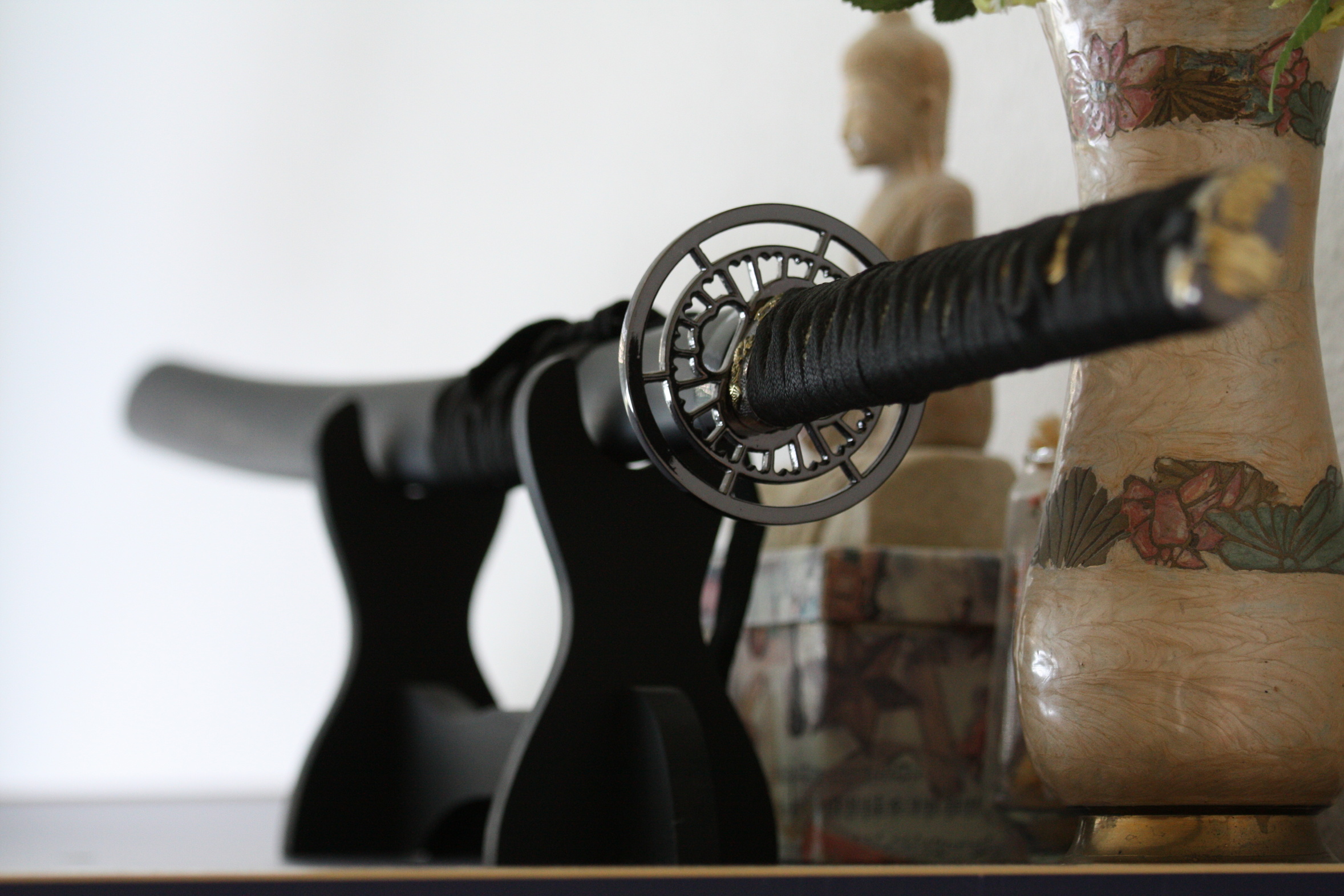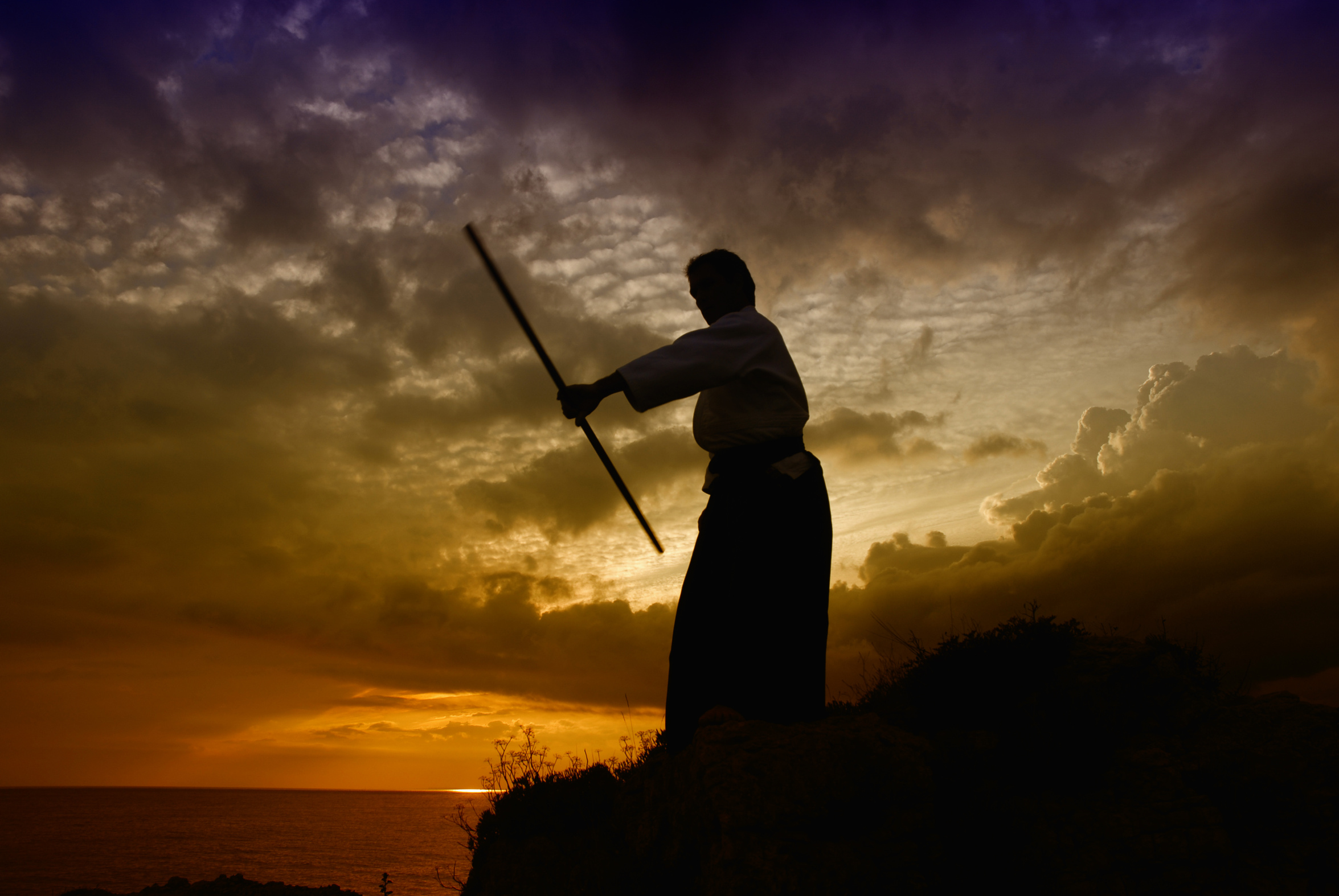Aikido, despite modern developments, remains a Martial Art and not a codified sport aimed at competition. In the etymology of the word “Aikido” we find: Ai – to unite; unity; to bring opposites together… hence love and harmony. Taking the easy path would lead to an interpretation suggesting that love and harmony justify the rejection of the martial aspect.
“Si vis pacem para bellum” = if you want peace, prepare for war. More accurately: if you want peace, prepare warriors. In Aikido, one must therefore work tirelessly, educate oneself, and endure rigorous training.
Aiki must be earned. Step by step, progression (kotai, jutai, ekitai, kitai) allows violence to be transcended. The Aiki soldier has finally become a warrior.
Aikido is not self-defense. If it were, it would hinder the principle of Irimi — or even annihilate it. Irimi is the active cause of Aiki. Irimi dictates the rules; without Irimi, Aiki is impossible. Putting one’s body into the body of the opponent is fundamental. Then there is the ideogram “KI”, which in Japanese is composed of two characters.

The first can mean “Rice” (matter, nourishment), and the second, “Steam” (gas, energy, ether). Thus, matter and energy are united to designate a single concept.
Energy is revealed through the manifestations it causes: release of heat, light, or the movement of a mass. Therefore, KI can only be seen and understood in the Dojo through the material changes we provoke during training. From this perspective, KI might be gas, ether… or a substance blended into the body. It could be the undifferentiated matter from which the entire Universe is formed.
A living being is energy animated by spirit. It is this energy that directed matter—also energy—toward the phenomenon of life. A living being is thus energy animated by itself, just as primitive energy is. There is then a production of beings through modifications of Being. KI is therefore both cosmic and terrestrial. Cosmic, as subtle, immaterial energy — steam, the sky. Terrestrial, as material energy — rice, the earth.
Ai and KI are now known. It is the way of the stars, the path of Compostela; the road is long, no doubt. So let us begin the journey under the gaze of O’Sensei. “Knowledge can only be attained by those capable of discovering it.”
Originality of Aikido
Beyond techniques, the Aikido practitioner learns to breathe through the abdomen, to feel the body’s balance from the center of gravity, located just below the navel. Through this breathing and this center, one gains the ability to perceive the “Ki”. This energy, starting from the center, becomes effective thanks to technique, is amplified by abdominal breathing, and is applied with spontaneity and harmony with the opponent’s movement.
Practically, movements enable throws, immobilizations, and joint locks. One can practice against one or several opponents, against a knife, sword, or stick. The dozen fundamental techniques allow for thousands of variations.
In Conclusion

If we had to summarize the characteristics of Aikido in a few key words, we would emphasize its external qualities (technique, effectiveness, use of the opponent’s energy, aesthetics), internal qualities (balance, use of Ki, self-control, breathing), and moral values (proportional defense, non-aggressiveness, the quest for non-combat).
Finally, the practitioner should reflect on the words of Osawa K. Shihan (quoted in *Aikido, Etiquette and Transmission* by Tamura N. Shihan, Editions du Soleil Levant, 1992), who compares the practice to a mirror that reflects the outside world without becoming attached to it:
“Attachment gives rise to the combative spirit; yet Aikido is a quest for true freedom — a quest that is carried out by kneading the body as a good baker kneads his dough, not a method of destruction. In Aikido, there is the freedom of the mirror.”
